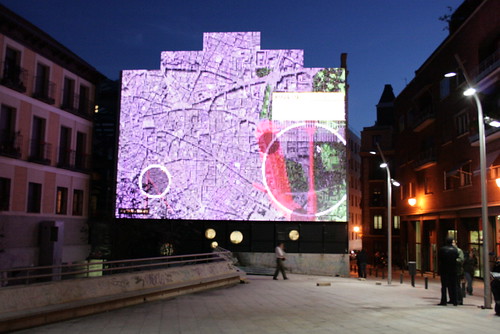El 25 y 26 de marzo va a tener lugar en la universidad de Oxford (Saïd Business School) una conferencia sobre visualización de datos: «Visualisation in the age of computerisation».
Ahora que nos estamos preparando para el taller de junio, «Comprender las infraestructuras», esta conferencia viene al pelo en el proceso previo de documentación que estamos haciendo desde Medialab-Prado.
Pegamos a continuación la contextualización y la exposición de temas principales del encuentro:
»
Visualisation: background and themes
Topic:
Visualisations abound in all forms and phases of research and knowledge production and communication. From the graphical user interface of our computers, to equipment and instrument displays, to the screens of our smart phones, knowledge communication of all kinds is increasingly visual. In design, engineering, science, education, medicine, the humanities and social sciences, the increasing pervasiveness of visual images is due largely to computational techniques. To be sure, computers have been in common use in science and related domains since the advent of the desktop computer. Over the past decade, however, plain text commands, programming languages and numerical engagement have given way to the visual form, from the reproduction, modification and synthesis of images to the visual representation of that which formerly could not be seen.
There has been an unprecedented rate of innovation in computational imaging and visualising techniques to render physical and non-physical data in visual form, including techniques for multi-dimensionality, the development of algorithmic techniques for image processing, the production of hybrid visual objects and an apparent photo-realism for non-existent entities and objects. The emergence of the Internet-as-database, with complex and massive quantities of data mined from online social and spatial processes given visual form, has gone hand-in-hand with these advances in making new phenomena and data visible.
Themes:
1) Changing Notions of Cognition
Traditional ideas about cognition have long been rejected in favour of an understanding of interpretation in terms of in situ material practices. It is thus recognised that mentalistic precepts such as «recognising patterns», «identifying relationships», «assessing fit and correspondence» etc are better treated as idealised depictions of the activities involved in generating, managing and dealing with representations. In science in particular this move established the importance of the muddled and contingent efforts involved in the practical activities of making sense (Lynch and Woolgar, 1990). Yet the advent of new modes of computerised visualisation has seen the re-emergence of claims about «cognition» (McCormick et al, 1987) and about the role of visualisations as «cognitive aids». In what ways are our understandings of the material basis of cognition challenged by the emergence and use of new computational artefacts?
2) Changing Notions of Objectivity
Scholars such as Galison and Daston have described the involvement of technologies in science in terms of the historical flux of epistemic virtues in science, tracing a trajectory from idealised images that required intervention and specialised craftsmanship to more mechanical forms of recording. A later hybridisation of these virtues has been claimed to occur when instruments, and, later computers, allowed active manipulation versus passive observation (Hacking 1983, Galison 1997). Other researchers suggest that the computerisation of images accounts for an epistemic devaluation of visualisations in favour of their mathematical manipulation which the digital (binary) format allows (Beaulieu 2001). Now that computers are inextricable from visual evidence, a situation described as “instrumental cognition” (Pomian 1998) or «thing knowledge» (Baird 2004), we ask what is the impact upon the epistemologies of practitioners?
3) Changing ontologies of scientific vision
Science and Technology Studies (STS) has documented the manner in which visually inscribing phenomena makes ‘the everyday’ of science work (Latour and Woolgar 1979, Lynch and Woolgar 1990). STS suggests that much of what enables science to function is making things visible through the assembling of inscriptions for strategic purposes, and has focused on disclosing the innervating components of science through observation in the ‘wet-lab’ or physical sites of production. While vitally important for providing the blood flow of science, such visual representations are often black-boxed as self-evident.Now, researchers often confront visualisations assembled entirely on the computer or web-based ‘spaces’, seemingly black-boxed again. In the age of computerisation, can we adequately document the ontologies of scientific representation, how they are composed and deployed?
»
(Source/más info: http://www.sbs.ox.ac.uk/centres/insis/visualisation/Pages/background.aspx)
